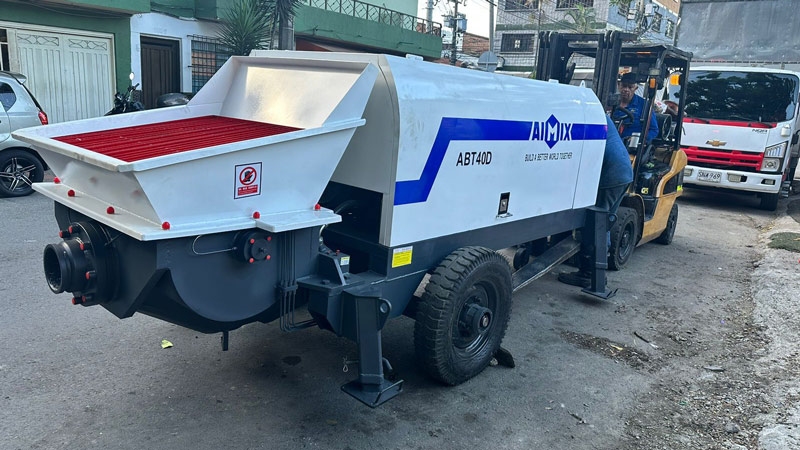Across Latin America, construction activities are expanding rapidly as infrastructure investments, residential housing projects, and commercial developments continue to grow. In this dynamic environment, the concrete pump has become an indispensable machine for ensuring efficient and consistent concrete delivery on-site. For contractors, the key question in 2025 is not only how much a concrete pump for sale(venta de bomba de concreto) costs, but also how quickly it can generate returns on investment (ROI) through productivity, reliability, and reduced labor dependency.
Current Market Overview of Concrete Pumps in Latin America
The demand for concrete pumping equipment in Latin America is rising due to increasing construction complexity and tighter project timelines. Countries such as Brazil, Mexico, Chile, and Peru are investing heavily in public infrastructure and private sector developments, creating strong market momentum for both stationary and trailer concrete pump models.
In many regions, contractors are moving away from manual concrete placement or traditional cranes due to their inefficiency and higher labor costs. Instead, automated pumping systems have proven to be faster, safer, and more economical. As local distributors and international manufacturers expand their sales networks, the market has become more competitive, leading to diversified pricing structures and technology options.
Key Factors Influencing Concrete Pump Prices
1. Pump Type and Capacity
The price of a concrete pump(bomba de concreto) depends largely on its pumping capacity, pressure output, and application type. For instance, a small trailer concrete pump with a 40–60 m³/h output is often ideal for small and medium-sized projects such as housing construction or narrow urban streets. In contrast, a truck-mounted boom pump with extended reach capabilities can cost significantly more, but is preferred for large infrastructure projects like bridges and tunnels.
2. Automation and Control Systems
Modern pumps increasingly integrate smart control technologies that allow operators to monitor performance, detect malfunctions, and predict maintenance needs. These intelligent systems improve uptime and safety, ultimately affecting ROI. Although automation increases upfront cost, it significantly lowers operational expenses over the equipment’s lifecycle by reducing fuel waste, manual errors, and repair frequency.
3. Build Quality and Component Durability
Durability plays a decisive role in pricing. High-quality hydraulic systems, reinforced steel components, and anti-wear materials directly contribute to the longevity of a concrete pump for sale. In the Latin American climate—where construction sites often face heat, humidity, and dusty conditions—durable construction ensures fewer breakdowns and consistent pumping efficiency.
4. Brand Reputation and After-Sales Service
Established brands typically offer higher-priced models, but their after-sales support, spare parts availability, and technical assistance justify the investment. In Latin America, where local maintenance and rapid service response are crucial, a supplier with an extensive regional presence can significantly reduce equipment downtime, improving project continuity and profitability.
5. Logistics, Taxes, and Import Regulations
Transportation costs, import duties, and currency fluctuations also impact equipment prices. Buyers in inland or remote areas often pay more for logistics compared to coastal regions. Some countries, such as Colombia and Chile, have introduced tax incentives for environmentally efficient machinery, which can help offset the purchase cost of advanced models.
ROI Considerations for Concrete Pump Investment
1. Productivity Gains and Labor Reduction
One of the main drivers of ROI for concrete pumps is efficiency. A well-calibrated trailer concrete pump(bomba estacionaria de concreto) can deliver concrete continuously at a stable flow rate, cutting pouring time by 40–60% compared to manual labor. This allows contractors to complete more projects in less time, directly boosting profitability.
2. Energy Efficiency and Maintenance Savings
Fuel consumption and wear-part replacement are key operational costs. Modern pumps with intelligent energy management systems can optimize hydraulic pressure and reduce unnecessary power use. In addition, predictive maintenance features alert operators before critical issues occur, minimizing downtime and repair expenses.
3. Adaptability to Different Project Conditions
Latin America’s diverse geography—ranging from mountain construction in Peru to coastal projects in Brazil—demands adaptable equipment. Mobile and trailer concrete pump models are particularly suitable because they can be easily transported and set up even in challenging terrain. This flexibility increases project opportunities and maximizes utilization rates, enhancing ROI over time.
4. Lifecycle Cost and Resale Value
Beyond the purchase price, contractors should evaluate the total cost of ownership (TCO). A durable and efficient concrete pump may have a higher initial price but can retain strong resale value and deliver consistent performance over several years. Choosing a model with proven reliability and available spare parts in Latin America helps maintain asset value and ensures steady cash flow.
Market Outlook to 2025
By 2025, the Latin American concrete pump market is expected to expand further as governments prioritize sustainable infrastructure and private developers seek faster project delivery. The adoption of automated and energy-efficient equipment will continue to rise, while localized service networks will strengthen customer trust and satisfaction.
Manufacturers that combine smart technology, flexible financing options, and comprehensive after-sales service will gain a competitive edge. For buyers, the strategic focus should be on selecting equipment that not only fits project needs but also delivers measurable economic benefits through reduced downtime and long-term efficiency.
Conclusion
The Latin American concrete pump market is evolving quickly, driven by technology, cost efficiency, and service innovation. For contractors evaluating a concrete pump for sale, understanding how pricing correlates with features, reliability, and ROI is critical to making a smart investment decision. As automation and sustainability trends accelerate, the next generation of trailer concrete pump systems will continue to reshape how concrete is delivered—offering faster, safer, and more profitable solutions for the region’s growing construction industry.


Comments
No comments yet. Be the first to react!